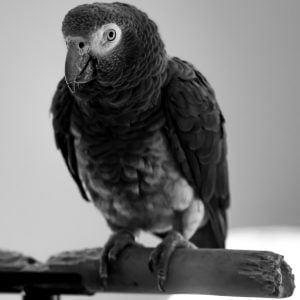
Can Small Birds Fly Higher Than Bigger Birds?
Last Updated on by Mitch Rezman
From Quora
Miniature new transmitters recently revealed that the 4-ounce Arctic Tern (113-gram) bird follows zigzagging routes between Greenland and Antarctica each year.
A fat cockatiel weighs a little more than 100 grams.
In the process, the arctic tern racks up as much as 56,000 frequent flier miles – edging out its archrival, the sooty shearwater, by roughly 12,000 miles.
How well would a parrot be able to handle elevations higher than 12,000 feet?
Altitude is not a migrating bird’s friend as it requires a huge amount of calories to gain.
There’s also the problem of extracting oxygen from the air because air at very high altitudes becomes problematic.
How well would a parrot be able to handle elevations higher than 12,000 feet?
Mother nature feels that yes, bigger birds should be the ones to fly at higher altitudes.
Let’s look at the Rüppell’s vulture, a very large bird, that has been reported by commercial airline pilots seen at altitudes of Over 37,000 Feet (almost 7 miles above the earth).

The temperature at that altitude is typically about -56.5°C (-69.7°F) yet there they are, with bald heads flapping their wings 7 miles above the earth – it’s a DNA thing
Some Bird’s Maximum Heights
Rüppell’s vulture 11,300 metres (37,100 feet).
Common crane 10,000 metres (33,000 feet)
Bar-headed goose 8,800 metres (29,000 feet)
Whooper swan 8,200 metres (27,000 feet)
Alpine chough 8,000 metres (26,500 feet)
Bearded vulture 7,300 metres (24,000 feet).
Andean condor 6,500 metres (21,300 feet)
Mallard 6,400 metres (21,000 feet)
Bar-tailed godwit 6,000 metres (20,000 feet)
White stork 4,800 metres (16,000 feet).
Author Profile
Latest entries
 The Traveling BirdJune 26, 2025Can You Name 5 Parrot Species That Are Living Wild in the USA?
The Traveling BirdJune 26, 2025Can You Name 5 Parrot Species That Are Living Wild in the USA? Bird BehaviorJune 26, 2025How is it Parrots Are Problem Solvers Social Animals and Even Use Tools?
Bird BehaviorJune 26, 2025How is it Parrots Are Problem Solvers Social Animals and Even Use Tools? Bird & Parrot AnatomyJune 25, 2025How a Tiny Chemical Modification Makes Parrots Nature’s Living Paintings
Bird & Parrot AnatomyJune 25, 2025How a Tiny Chemical Modification Makes Parrots Nature’s Living Paintings PigeonsJune 20, 2025How Do Parrots Thrive in Cities Outside Their Native Habitats?
PigeonsJune 20, 2025How Do Parrots Thrive in Cities Outside Their Native Habitats?


